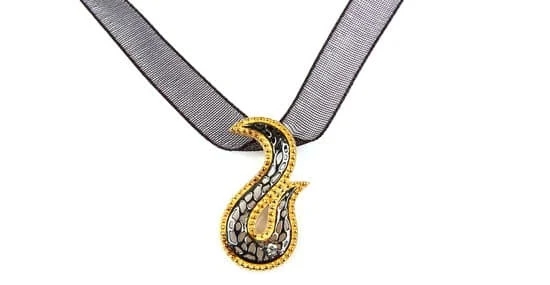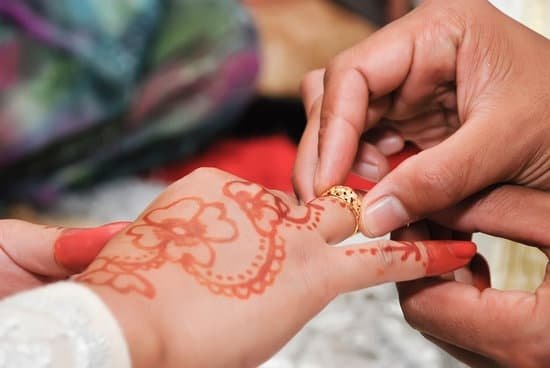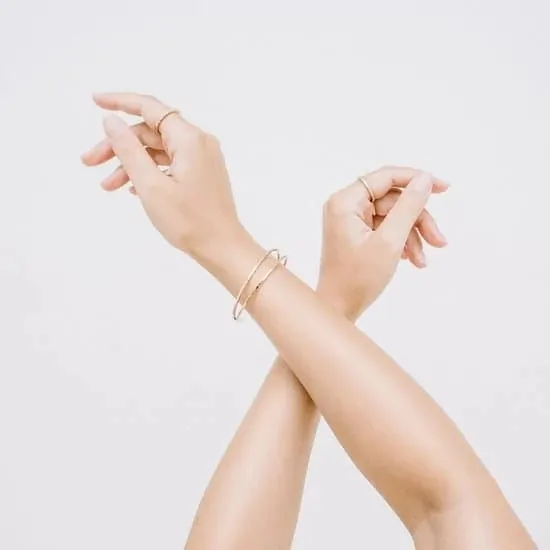Jewelry has always played a significant role in fashion, adding a touch of glamour and sophistication to any outfit. From statement necklaces to delicate rings, jewelry has the power to transform an ensemble and make a bold style statement. But why is jewelry important in fashion?
Fashion is not merely about clothing; it is an expression of our individuality and a way to communicate our personality to the world. And jewelry plays a vital role in this self-expression. It allows us to showcase our style preferences, whether we opt for bold and edgy pieces or choose dainty and minimalist designs. The jewelry we wear becomes an extension of ourselves, reflecting who we are and what makes us unique.
Beyond self-expression, jewelry also holds emotional significance for many individuals. We often have sentimental attachments to certain pieces, whether they are heirlooms passed down through generations or gifts from loved ones. These cherished accessories carry memories and become symbols of love, friendship, or achievement. Wearing them not only enhances our fashion sense but also brings us joy and a sense of connection.
In addition to personal significance, jewelry is crucial in enhancing the visual appeal of an outfit. The right piece can complete a look, taking it from ordinary to exceptional. Whether it’s a sparkling pair of earrings that illuminate one’s face or a statement bracelet that adds flair to simple attire, jewelry has the ability to elevate any ensemble.
In this article, we will delve into the multifaceted importance of jewelry in the world of fashion. From its historical significance as a symbol of wealth and power to its role in shaping current trends, we will explore how jewelry continues to captivate society’s imagination. We will also examine ethical considerations within the industry while discussing upcoming trends and innovations on the horizon.
A Brief Historical Overview of Jewelry in Fashion
Jewelry has been an essential part of human culture for thousands of years, serving as a symbol of status and power. Ancient civilizations such as Egypt, Mesopotamia, and Rome were obsessed with adorning themselves with luxurious jewelry made from precious metals and gemstones.
In these cultures, jewelry was not only seen as a mark of wealth but also had deep religious and cultural significance. For example, ancient Egyptians believed that certain gemstones had protective properties and used them in amulets and talismans for both the living and the deceased.
As time went on, jewelry continued to evolve as a fashion accessory. During the Renaissance period in Europe, intricate gold filigree work became popular, creating delicate pieces that showcased extraordinary craftsmanship. The Victorian era saw a resurgence of sentimentality in jewelry design, with lockets and cameo brooches becoming fashionable ways to carry keepsakes or portraits of loved ones.
Today, while the materials used may have changed over time, the connection between jewelry and fashion is still strong. Jewelry serves as a form of self-expression for individuals to showcase their personality and style preferences. It allows people to create unique looks by mixing different metals, gemstones, and designs. From statement necklaces to stackable rings, there are endless options for individuals to create their own personal style through jewelry choices.
In addition to self-expression, jewelry also plays a crucial role in enhancing and completing an outfit. Whether it’s adding a touch of sparkle with diamond earrings or making a bold statement with a cocktail ring, the right piece of jewelry can transform a simple ensemble into something truly eye-catching. Different styles of jewelry can also be worn for specific occasions or events; for example, delicate pearl necklaces are often associated with formal events like weddings or galas.
Jewelry has always been closely intertwined with fashion trends. Jewelry designers play a significant role in influencing current fashion trends by creating unique designs that capture the attention of consumers. Additionally, celebrities and influencers often play a crucial role in popularizing particular jewelry styles by wearing them on red carpets or endorsing brands on social media. For example, the rise of minimalist geometric jewelry has been attributed to its popularity among fashion-forward influencers.
Overall, the historical significance of jewelry in fashion cannot be understated. From ancient civilizations to modern times, jewelry has served as a symbol of wealth, power, self-expression, and cultural significance.
Its ability to enhance an outfit and create unique looks has made it a vital element in the world of fashion. As we look towards the future, we can expect to see even more innovative designs and sustainable practices that continue to keep jewelry at the forefront of fashion trends.
The Significance of Jewelry in Self-expression
Jewelry has always played a significant role in enabling individuals to express their personality and style preferences. Through the choice of jewelry, people can showcase their identity, creativity, and individuality. Whether it’s a pair of statement earrings, a personalized necklace, or a stack of unique rings, jewelry allows individuals to communicate who they are without saying a word.
Reflecting Personal Style
One of the most powerful aspects of jewelry is its ability to act as an extension of one’s personal style. Each piece tells a story and has the potential to evoke specific emotions and memories. From delicate and minimalist designs to bold and extravagant pieces, there is something for everyone in the world of jewelry.
Some individuals may prefer dainty necklaces with sentimental charms that remind them of loved ones or special occasions. Others may gravitate towards oversized cocktail rings or vibrant gemstone bracelets that make a bold fashion statement. Regardless of personal taste, jewelry provides an opportunity for self-expression and helps individuals present themselves visually to the world.
The Emotional Connection
Jewelry holds immense sentimental value for many people, further deepening its significance in self-expression. Pieces of jewelry often become cherished possessions that are passed down through generations or received as meaningful gifts. These heirlooms carry not only their aesthetic beauty but also years of family history and love.
People may form emotional connections with specific pieces due to the memories associated with them. For example, a bracelet received from a close friend might symbolize friendship and loyalty, while an engagement ring represents love and commitment. The ability for jewelry to hold such sentimental value makes it an essential tool for self-expression.
Ultimately, the significance of jewelry in self-expression lies in its power to visually communicate our individuality and emotions without words. As we choose our accessories each day, we carefully curate combinations that reflect our personality while complementing our outfits. Jewelry becomes an integral part of our personal style, allowing us to express ourselves authentically and showcase our uniqueness to the world.
Jewelry as an Element of Visual Appeal
Jewelry plays a significant role in enhancing the visual appeal of an outfit. It has the power to transform a simple ensemble into a glamorous and stylish look. Whether it’s a pair of statement earrings, a chunky bracelet, or a dainty necklace, jewelry has the ability to add that extra touch of elegance and sophistication.
Enhancing and Completing an Outfit
One of the primary functions of jewelry in fashion is its ability to enhance and complete an outfit. The right piece of jewelry can elevate even the most basic attire, making it stand out from the crowd.
For example, a little black dress can be transformed into a show-stopping ensemble with the addition of statement earrings and a cocktail ring. Jewelry has the power to draw attention to specific areas, like the neckline or wrists, enhancing those features and creating a focal point for the overall look.
Moreover, jewelry can be used strategically to create balance and harmony. When choosing jewelry pieces, it’s essential to consider factors such as color, shape, and size. By selecting complementary colors and shapes, as well as balancing proportions, one can create a cohesive look that brings together all elements of their outfit.
Styles and Transformation
There are various styles of jewelry that cater to different fashion preferences. From classic and timeless pieces to bold and avant-garde designs, there is something for everyone. Different styles of jewelry can completely transform an outfit’s aesthetic.
For instance, wearing delicate gold chains with minimalist pendants can create a chic and understated look suitable for everyday wear or formal occasions alike. On the other hand, layering chunky silver bracelets with oversized gemstone rings can produce a more edgy and eclectic vibe.
Furthermore, combining different types of jewelry can also contribute to creating unique looks. Pairing vintage-inspired brooches with modern hoop earrings adds an element of eclecticism and individuality.
The Influence of Jewelry on Fashion Trends
Jewelry has always played a significant role in shaping fashion trends. Over the years, jewelry designers have had a profound influence on what is considered fashionable and popular. From statement necklaces to stackable rings, these unique pieces have the power to transform an entire look and become iconic symbols of style.
One way in which jewelry designers impact current fashion trends is through their creativity and innovation. They constantly push boundaries by experimenting with new materials, techniques, and designs. Their bold creations often catch the attention of fashion influencers and celebrities, who then incorporate these pieces into their own wardrobes. As a result, these jewelry designs gain widespread recognition and begin to shape the current fashion landscape.
Celebrities and influencers also play a crucial role in popularizing particular jewelry styles. When influential individuals are seen wearing a specific type of jewelry, it instantly becomes sought after by the masses. Social media platforms like Instagram have further amplified this phenomenon, as people can easily see what their favorite celebrities are wearing and aspire to emulate their style.
| Celebrity/Influencer | Jewelry Trend |
|---|---|
| Kylie Jenner | Stacked bracelets |
| Rihanna | Hoop earrings |
| Harry Styles | Pearls for men |
As we can see from these examples, high-profile individuals have the ability to set or revive jewelry trends that quickly permeate throughout society. This demonstrates the powerful influence that both designers and influencers hold within the world of fashion.
Jewelry as a Symbol of Wealth and Luxury
Jewelry has long been associated with wealth and luxury, serving as a symbolic representation of one’s status and affluence. Throughout history, certain gemstones and metals have been coveted for their rarity, beauty, and monetary value. From the regal diamonds worn by royalty to the elegant pearls showcased by social elites, jewelry has been used as a means of displaying both personal wealth and societal standing.
One of the main reasons why jewelry is often synonymous with wealth is its high cost. Precious gemstones such as diamonds, emeralds, and sapphires are naturally scarce and require extensive mining efforts to extract. Additionally, these gemstones often undergo intensive cutting and polishing processes before they can be incorporated into exquisite pieces of jewelry. The rarity and labor-intensive nature of these materials contribute to their high price tags.
Metals like gold and platinum also play a significant role in the perception of jewelry as a symbol of luxury. Gold has been treasured throughout human history for its intrinsic beauty and durability. It is resistant to tarnish or corrosion, making it an ideal material for crafting high-end jewelry that can be passed down through generations.
Platinum, on the other hand, is characterized by its rarity and prestige. Often more expensive than gold, platinum possesses a cool white luster that complements precious gemstones excellently.
Cultural influences also contribute to the association between jewelry and wealth. In many societies, particularly in Eastern cultures like India or China, certain gemstones hold deep cultural significance and are seen as markers of prosperity or social status. For example, jade has long been revered in Chinese culture as a symbol of good luck and fortune. Similarly, ruby has been cherished in Indian culture for centuries as a signifier of wealth and power.
It is essential to acknowledge that while some individuals may choose to flaunt their material wealth through extravagant pieces of jewelry, not all forms of luxury need to come at a significant cost. There are many ways to achieve a sense of luxury and opulence through less expensive materials and unique designs.
Furthermore, personal taste and style play a significant role in determining the perceived value of jewelry, making it possible for individuals to express their wealth and status through pieces that resonate with them personally.
Ethical Considerations in the Jewelry Industry
The jewelry industry is known for its glamour and beauty, but it also has a darker side that often goes unnoticed. Ethical considerations in the jewelry industry are crucial to ensure that the pieces we wear are sourced and produced responsibly. It is essential to shed light on this issue and take steps towards supporting ethical practices in the industry.
One of the key ethical concerns in the jewelry industry is the sourcing of precious gemstones and metals. Many gemstones, such as diamonds, are mined in countries where mining practices have devastating environmental impacts and involve exploitation of workers. Unethical practices such as child labor and unsafe working conditions have been associated with certain mines.
To support ethical jewelry brands, consumers can look for certifications like the Kimberley Process Certification Scheme (KPCS) for diamonds or Fairtrade gold certification. These certifications ensure that the diamonds or metals used in jewelry have been sourced responsibly, without contributing to human rights violations or environmental damage. Additionally, consumers can seek out brands that provide transparency about their supply chains and adhere to fair labor standards.
Another aspect of ethical considerations in the jewelry industry is the impact on local communities where mines are located. Artisanal miners often face difficult living conditions and lack access to basic services such as healthcare and education. By supporting jewelry brands that empower these communities through fair trade practices or reinvesting profits into community development projects, consumers can make a positive difference.
Additionally, sustainability is an important consideration within the jewelry industry. With growing concerns about climate change and environmental degradation, more jewelry designers are embracing eco-friendly practices. This includes using recycled materials, reducing water consumption during production processes, and choosing renewable energy sources for manufacturing.
The Future of Jewelry in Fashion
In recent years, the fashion industry has seen a growing trend towards sustainability and eco-consciousness. As consumers become more aware of the environmental impact of their choices, there is a greater demand for ethical and responsible practices in all aspects of the industry, including jewelry. The future of jewelry in fashion lies in embracing sustainable materials and production methods.
One of the key innovations in sustainable jewelry is the use of recycled materials. Jewelry designers are now incorporating recycled metals and gemstones into their creations, reducing the need for new mining and extraction. This not only minimizes the ecological footprint but also allows for the reuse of precious resources.
Additionally, advancements in technology have made it possible to create high-quality synthetic diamonds and gemstones that are indistinguishable from natural ones. This provides a more ethical alternative without compromising on beauty or durability.
Another aspect of sustainability in jewelry is fair trade practices. Consumers are increasingly concerned about the working conditions and wages of those involved in the production process. Ethical jewelry brands ensure that their workers are paid fair wages, work in safe environments, and have access to healthcare and education. By supporting these brands, consumers can make a positive impact on the lives of artisans and workers around the world.
Furthermore, as society becomes more eco-conscious, there is a rising interest in minimalist and versatile jewelry pieces. These pieces are designed with versatility in mind: they can be worn with multiple outfits or layered together for a personalized look. By investing in fewer but higher quality pieces, consumers can reduce waste and create a lasting collection that reflects their unique style.
The adoption of sustainable practices by both established brands and emerging designers indicates that sustainability is not just a passing trend but rather an ongoing shift towards responsible consumption within the fashion industry. The future of jewelry lies in embracing these practices while continuing to push boundaries through innovation and creativity.
As consumers become more educated about their purchasing choices, they will seek out brands that align with their values, creating a demand for sustainable and ethically-made jewelry. Therefore, it is crucial for designers and brands to recognize and adapt to these changing preferences in order to thrive in the future of jewelry in fashion.
Conclusion
In conclusion, jewelry has always held a significant role in the world of fashion. Throughout history, it has been a symbol of status, power, self-expression, and visual appeal. Jewelry allows individuals to showcase their personality and style preferences, while also enhancing and completing an outfit. It has the power to influence fashion trends, with designers and influencers setting the stage for popular styles. Moreover, jewelry carries cultural and emotional significance, often representing wealth, luxury, and family history.
As we move towards the future, the charm of jewelry in fashion is likely to endure. We can expect to see innovative designs and sustainable practices shaping the industry. With consumers becoming more aware of ethical considerations, supporting brands that prioritize responsible sourcing and labor practices will become increasingly important.
In this ever-evolving landscape, it is crucial to embrace the beauty and significance of wearing jewelry. Whether it’s a statement necklace or a delicate pair of earrings, jewelry adds a touch of elegance and individuality to any ensemble. So let your personal style shine through by adorning yourself with these timeless accessories. Let us continue celebrating the everlasting charm of jewelry in fashion as an expression of our unique selves.
Frequently Asked Questions
What is the importance of fashion jewelry?
Fashion jewelry plays a significant role in enhancing one’s personal style and adding a finishing touch to any outfit. It allows individuals to express their personality, taste, and creativity through the selection of unique and trendy pieces.
By choosing fashion jewelry that complements their attire, people can make a statement or create a specific look they desire. Moreover, fashion jewelry is typically more affordable than fine jewelry, making it accessible for a wide range of consumers and allowing them to experiment with different styles without breaking the bank.
What is the importance of jewelry?
Jewelry holds great importance for many reasons. First and foremost, it has been treasured throughout history as a symbol of wealth, power, and social status. Adorning oneself with precious jewels signifies luxury and prestige.
Additionally, jewelry often carries sentimental value as it is commonly given on special occasions such as engagements, anniversaries, or birthdays – serving as reminders of cherished memories and loved ones. Moreover, jewelry can enhance one’s physical appearance by drawing attention to attractive features or acting as a focal point of an outfit, ultimately boosting self-confidence.
Why are accessories important in fashion?
Accessories are crucial in fashion because they have the power to completely transform an outfit from ordinary to extraordinary. They allow individuals to personalize their looks and add their unique touch by incorporating various elements such as hats, scarves, belts, handbags, footwear, or sunglasses. Accessories help create a polished ensemble by complementing or contrasting clothing choices while demonstrating attention to detail and style awareness.
In addition to enhancing aesthetics, accessories can also serve practical purposes like providing comfort or protection from weather conditions while still enabling individuals to express their fashion sensibility effectively. Through carefully chosen accessories, one can elevate their overall appearance and make a lasting impression within the world of fashion.

Welcome to my jewelry blog! My name is Sarah and I am the owner of this blog.
I love making jewelry and sharing my creations with others.
So whether you’re someone who loves wearing jewelry yourself or simply enjoys learning about it, be sure to check out my blog for insightful posts on everything related to this exciting topic!





